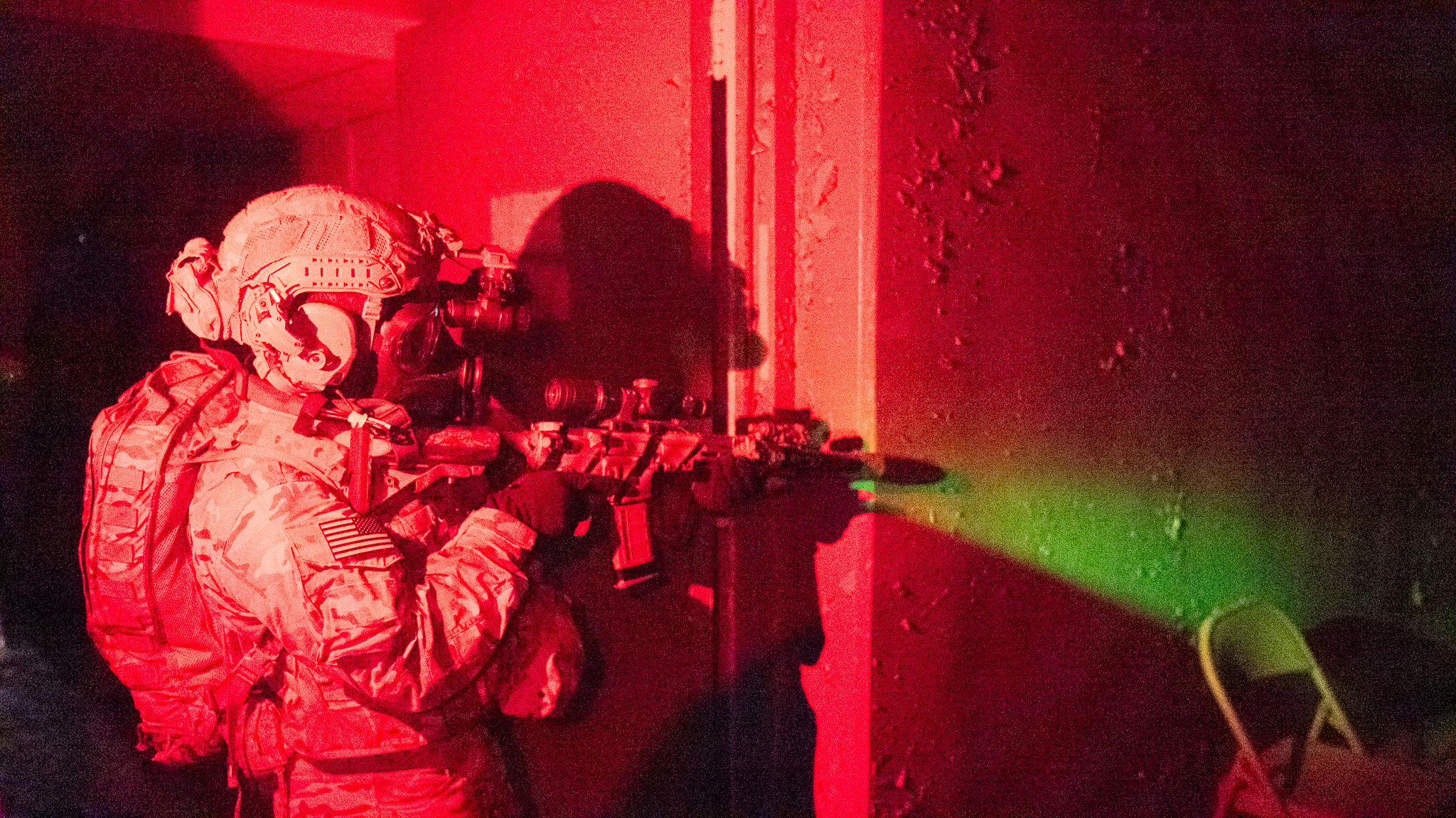
A unique team of Army soldiers who train to defuse nuclear emergencies has been training alongside the elite combat units that might one day have to them into — and back out of — a doomsday-like scenario.
Nuclear Disablement Team 1 recently held training with the 7th Special Forces Group and the 75th Ranger Regiment, the kind of special operations units they may work alongside during a major nuclear emergency.
Steven Modugno, a spokesperson for the 20th Chemical, Biological, Radiological, Nuclear, Explosives Command (CBRNE), said it’s uncommon for NDTs to train with the type of units that would escort them in real-world incidents.
“We always say, ‘Train as you fight.’ For both the Rangers and the NDTs, going through a facility is what realistic, tough training looks like,” Modugno said. “They’re able to practice and refine processes and figure out how they can effectively work together at a site like that.”
NDTs train for doomsday-style scenarios like sabotaged nuclear power plants and or rogue nuclear devices. The protective suits they wear, along with a respirator protecting them from nuclear and radiological threats, make combat operations a lot more difficult.
Subscribe to Task & Purpose today. Get the latest military news and culture in
“You’re talking about a potentially radioactive or contaminated environment that they would have to go into, which can be daunting,” Modugno said. “But the teams are self-deployable. They can go in, recon the site, collect samples, and identify them to figure out what materials are there. Like what hazards may be present and if there’s a threat.
The NDTs and the Special Forces troops met to train in a decommissioned Army pulse radiation facility in Louisiana. The team trained with the Rangers at Aberdeen Proving Ground, Maryland, where all three of the Army’s NDTs are based.
It’s not uncommon for NDTs to train in these types of decommissioned facilities, but working with the teams that would escort them is not as common, said Maj. Cory Chatigny, a Nuclear Operations Officer with Nuclear Disablement Team 1
“At the end of these events, we want to make sure the units see us as an asset to their organization and not a hindrance,” Chatigny said. “Being able to keep up with them, maneuvering through the facility, and providing the expert analysis that they require has made us look at how we can become even better at what we do.”
The exercise allowed NDT 1 to hone in their gear loadout for an operation while rehearsing safety protocols for themselves and the units assisting them.

“We know there is a chance that this could happen somewhere on the planet. Not every nuclear facility is going to be up to the same safety regulations that we see in the U.S. and partner countries,” Chatigny said. “Radiation is nearly impossible to detect without the proper equipment, so we make safety a priority. Our focus is on completing the mission and enabling the unit we support to safely continue on with their mission.”
NDT 1 has been pushing for more realistic training and schedules for both the 7th SFG and the 75th Ranger Regiment, so this presented an opportunity to train together in one of the most realistic training events to date.
Assets from the 20th CBRNE Command are located on 19 different bases in 16 states. Modugno said they are ready to respond to threats worldwide.
“They’re able to go in and do limited disablement operations, meaning, possibly shut down a reactor if it’s not being managed at that time so that threat no longer exists [in the area units are conducting operations],” Modugno said.
